If you're considering running a marathon and want to know in advance whether you should be bragging about your finish time or keeping shtum in the office the next day, we've got you covered.
There are plenty of factors that influence what makes a "good" marathon time. It's not just double a good half-marathon time, which is annoying for me, since I already wrote that article.
A full marathon is a serious endurance test, with many reporting that the first 20 of 26 miles feels more like the first half of the whole thing, mentally.
So, with new data from the London Marathon, here's a full-spectrum breakdown of what makes a good marathon time (plus, the slowest you can possibly run while still being technically better average).
What is a marathon?
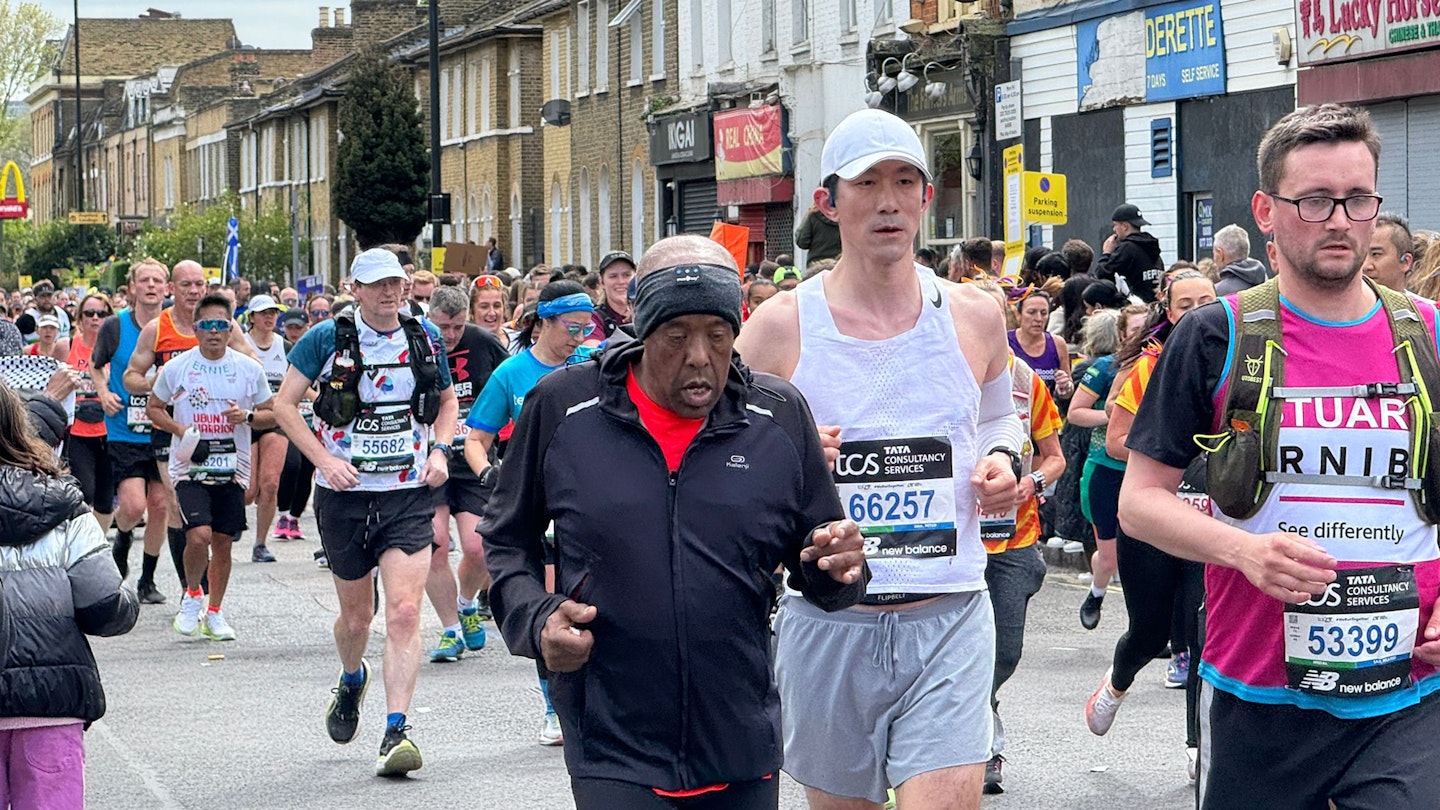
A marathon is officially 26.2 miles (42.195 km) long – a standard distance since the 1908 London Olympics. That year, Queen Alexandra requested the race start at Windsor Castle and finish in front of the royal box, creating the quirky 26 miles and 385 yards that stuck.
The marathon’s legendary roots go back to ancient Greece, but it was the London Games that cemented the modern distance. Since then, the marathon has become a global endurance badge of honour, drawing everyone from elite athletes to charity joggers.
What started as a niche challenge in the early 1980s has exploded into a mass-participation movement. Only around 6,255 people finished the first London Marathon in 1981. By 2023 and 2024, over 48,000 runners were crossing the finish line.
Alongside the growth in participation, finishing times have improved across the board. Breakthroughs in training, nutrition and shoe technology – especially carbon-plated "super shoes" – have made a real difference.
In London, men’s and women’s course records now stand at 2:01:25 and 2:16:16 respectively. Even recreational runners are getting faster: Strava data shows the median finish time at the London Marathon improved from 4:18:34 in 2022 to 4:06:39 in 2023. Smarter training and better gear have made the marathon more accessible and less daunting.
So how long does it actually take to run a marathon?
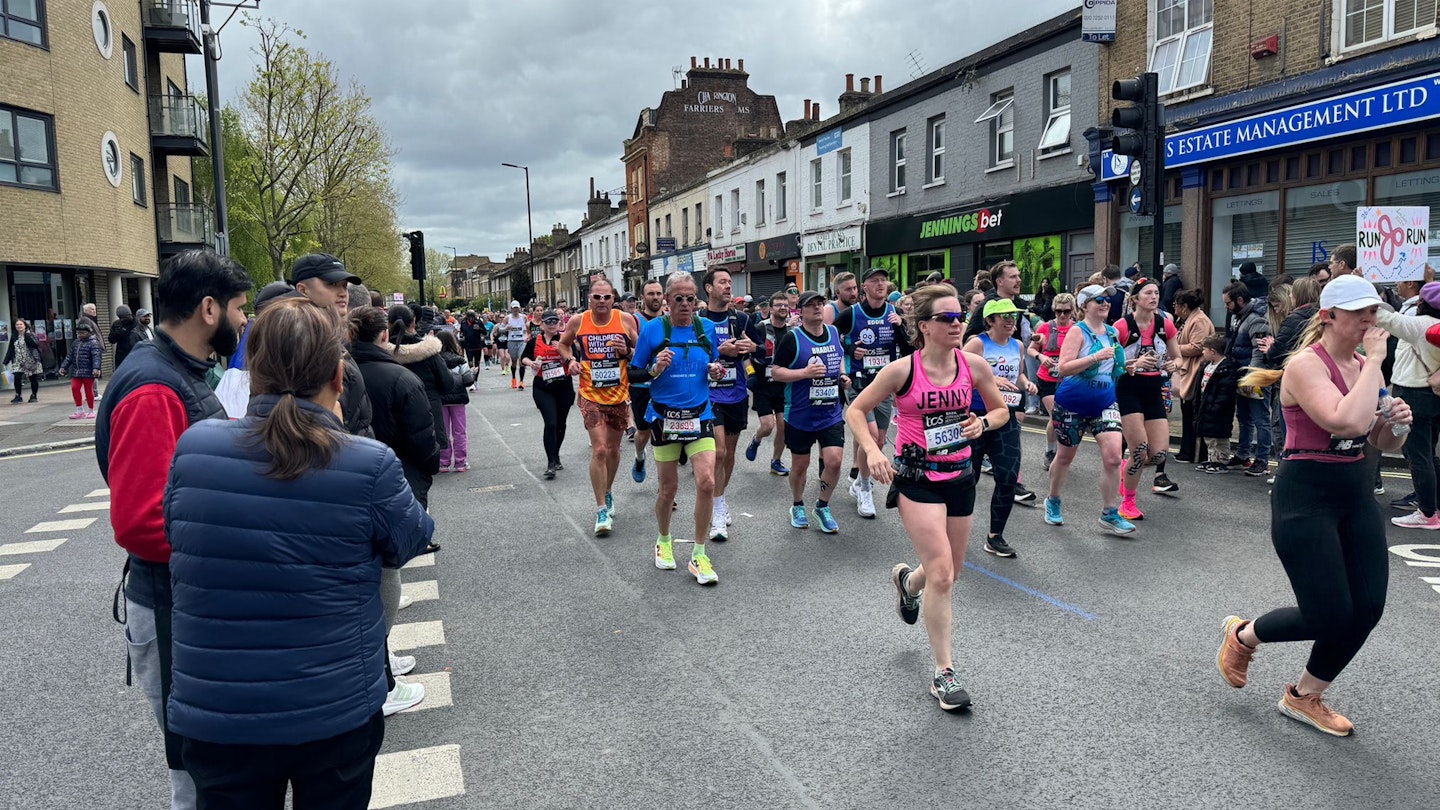
In the 2024 London Marathon, the average finish time was about 4 hours 28 minutes. For men, it was roughly 4:12; for women, closer to 4:49. The median – that is, the halfway point – was slightly faster: about 4:23 overall, 4:11 for men and 4:34 for women. These numbers reflect a huge range of abilities, from fast club runners to costumed charity walkers.
To put these numbers into perspective: a 4-hour marathon means holding around 9:09 per mile (5:41/km). A 3:30 finish is about 8:00 per mile, while a 6-hour marathon means you’re averaging closer to 13:44 per mile.
Related: What's a good running pace?
Most runners fall somewhere between 4 and 5 hours. So if you run a marathon in 4:30 or 5:00, you're solidly within the normal range.
What counts as a "good" marathon time?
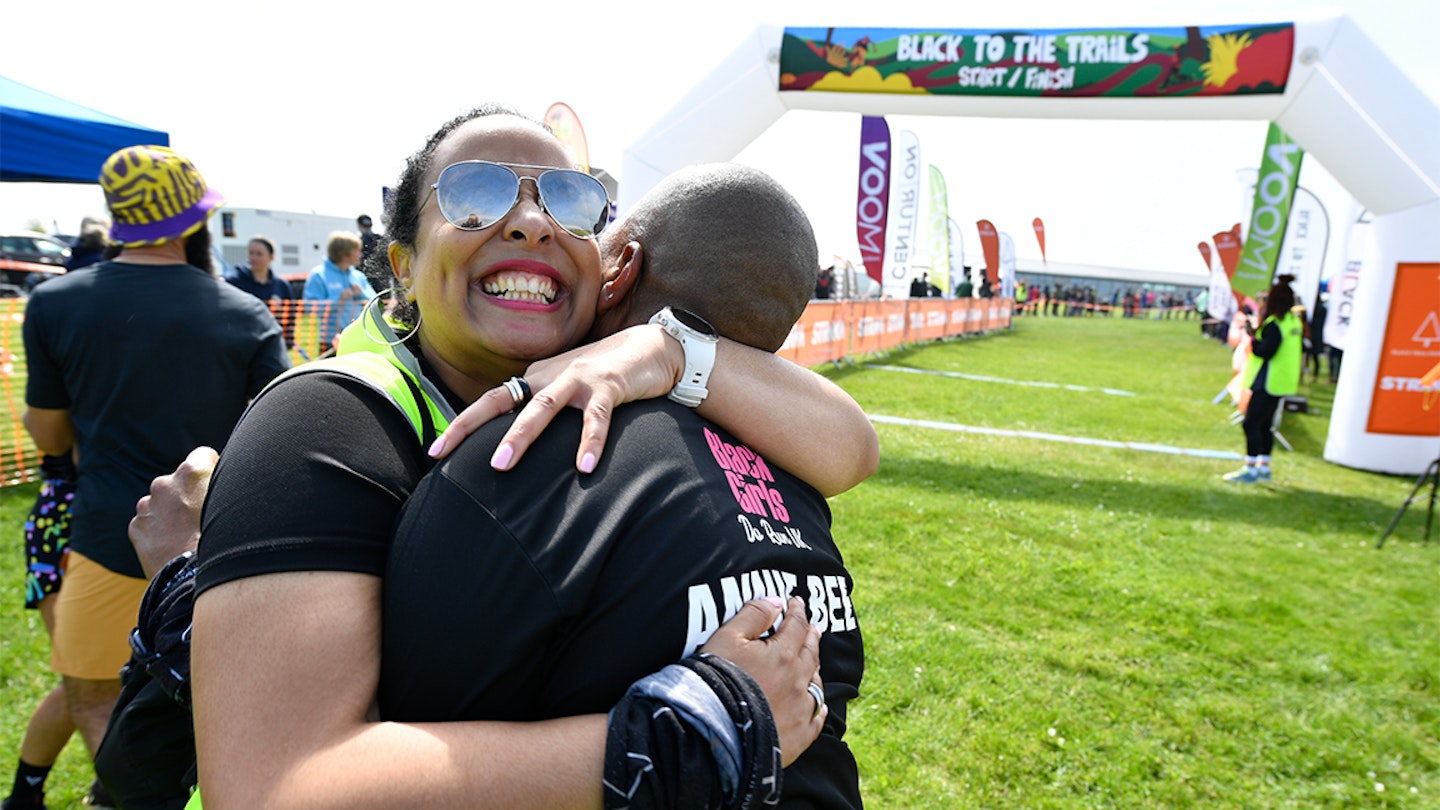
"Good" depends on your goals, fitness and experience. But using the 2024 London Marathon as a reference point, we can set some benchmarks:
- Sub-4:00: Puts you ahead of most recreational runners. In London 2024, roughly the top 25% finished under 4 hours.
- Sub-3:30: You're in the top 10–15% of the field. A strong amateur performance.
- Sub-3:00: Now you’re in elite amateur territory – faster than 90–95% of runners. This pace (6:52/mile) is a Boston qualifier for many age groups.
The fastest runners – professionals and world-record holders – come in well under 2:20, but for the rest of us, anything under 4 hours is a solid effort. Hit 3:30 and you're doing brilliantly. Push below 3:00 and you're in rare air.
Breaking it down by age and sex
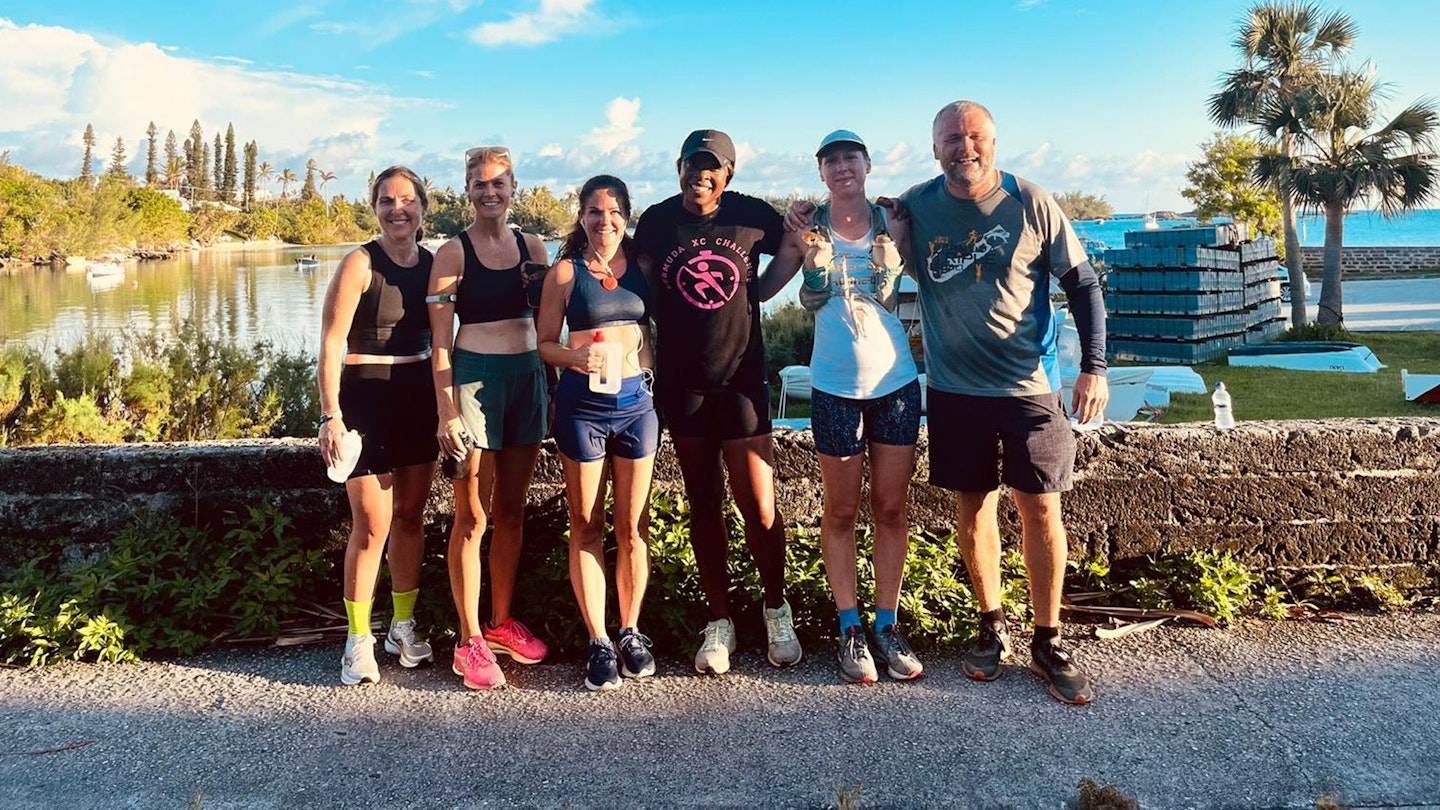
It’s important to calibrate what counts as a “good” marathon time based on age and gender. A 50-year-old won’t be expected to match the pace of a 25-year-old (though many can and do), and male vs female physiology leads to different average speeds.
Let's take a look at the top 10% finish times from the 2024 London Marathon for each age bracket:
Men's top 10% finishing times
18–29 | 2:58
30–39 | 2:59
40–49 | 3:08
50–59 | 3:24
60–69 | 3:45
70–79 | 4:17
These times highlight how competitive male age groups can be. While times naturally slow with age, standout performances still occur. Globally, the 40–49 bracket often includes the fastest recreational runners according to a Guardian investigation of marathon data.
In 2024, 41-year-old Kenenisa Bekele ran 2:04:15. A 65-year-old finished in 2:58:26, and the M70–74 winner clocked 3:13:31. Even more impressively, 80+ runner Stuart Mann broke four hours with a 3:58:19.
Women's top 10% finishing times
18–29 | 3:28
30–39 | 3:31
40–49 | 3:42
50–59 | 4:05
60–69 | 4:43
70–79 | 5:22
80+ | 6:42 (est.)
The women’s stats are just as inspiring. In the W45–49 category, the winner ran 2:43:43, and a W60–64 runner hit 2:59:06. In W70–74, the winning time was 3:43:03. The oldest female finisher, 80-year-old Valerie Brown, came home in 5:52:57.
Top 10% overall
To finish in the top 10% overall in 2024, you needed to beat roughly 3:33. Not to make you feel bad if you're reading this and not an OAP, but Jeannie Rice, age 76, ran 3:33:27.
To be fair, that did break the world record for W75–79 and place her among the top few thousand overall out of more than 50,000 runners.
Aiming for the top 25% in your age group
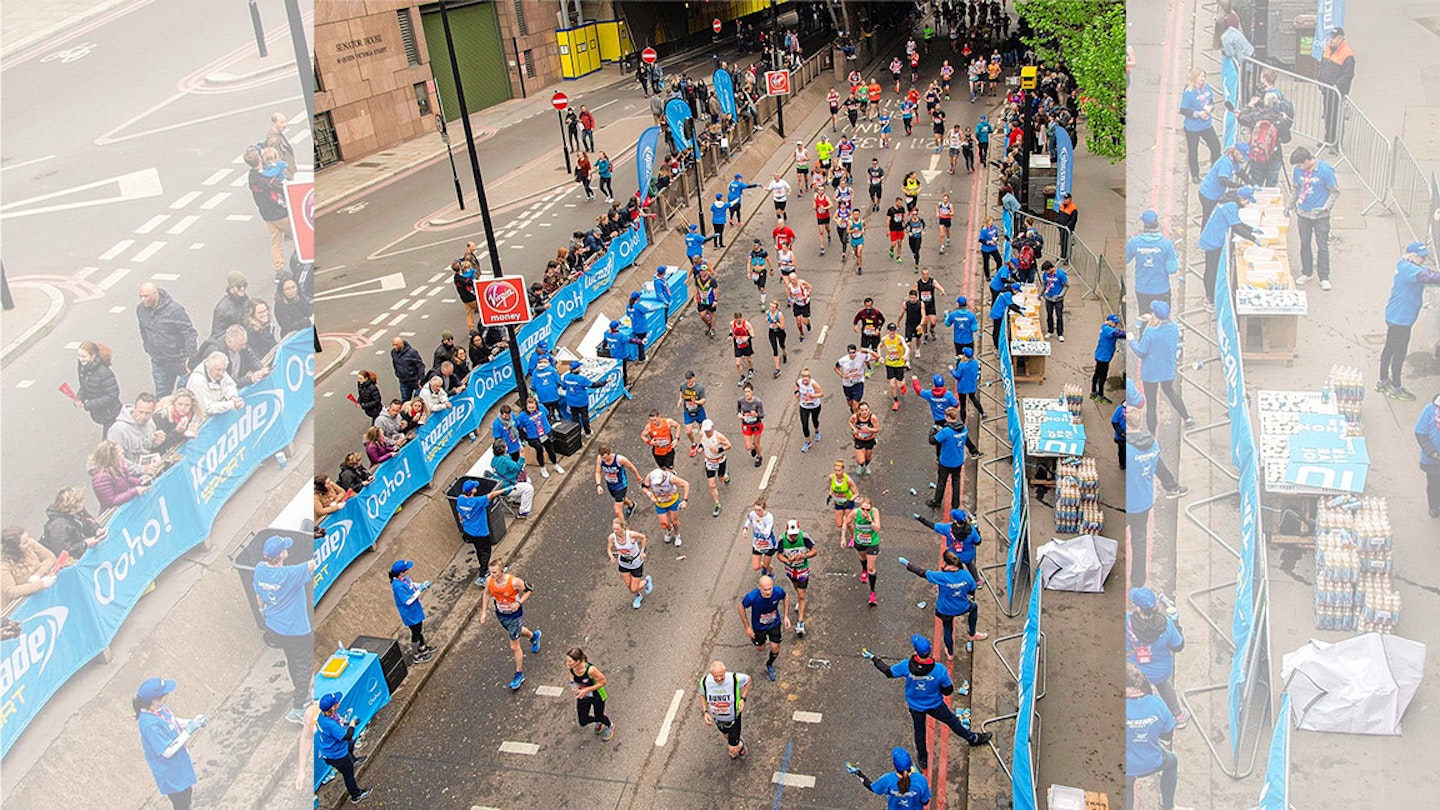
Cracking the top quarter is a strong goal for committed amateurs. This is what we'd call a good marathon time. The times to beat are:
Men's top 25% finishing times
18–29 | 3:28
30–39 | 3:32
40–49 | 3:40
50–59 | 3:58
60–69 | 4:24
70–79 | 5:03
80+ | 6:08 (est.)
Women's top 25% finishing times
18–29 | 4:01
30–39 | 4:05
40–49 | 4:18
50–59 | 4:56
60–69 | 5:42
70–79 | 6:20
80+ | 7:05 (est.)
Top 25% overall required a time under about 4:01. In London 2024, breaking 4:00:52 placed you within the top quarter. That’s a pace of roughly 9:10 per mile.
Beating the median – finishing in the top 50%
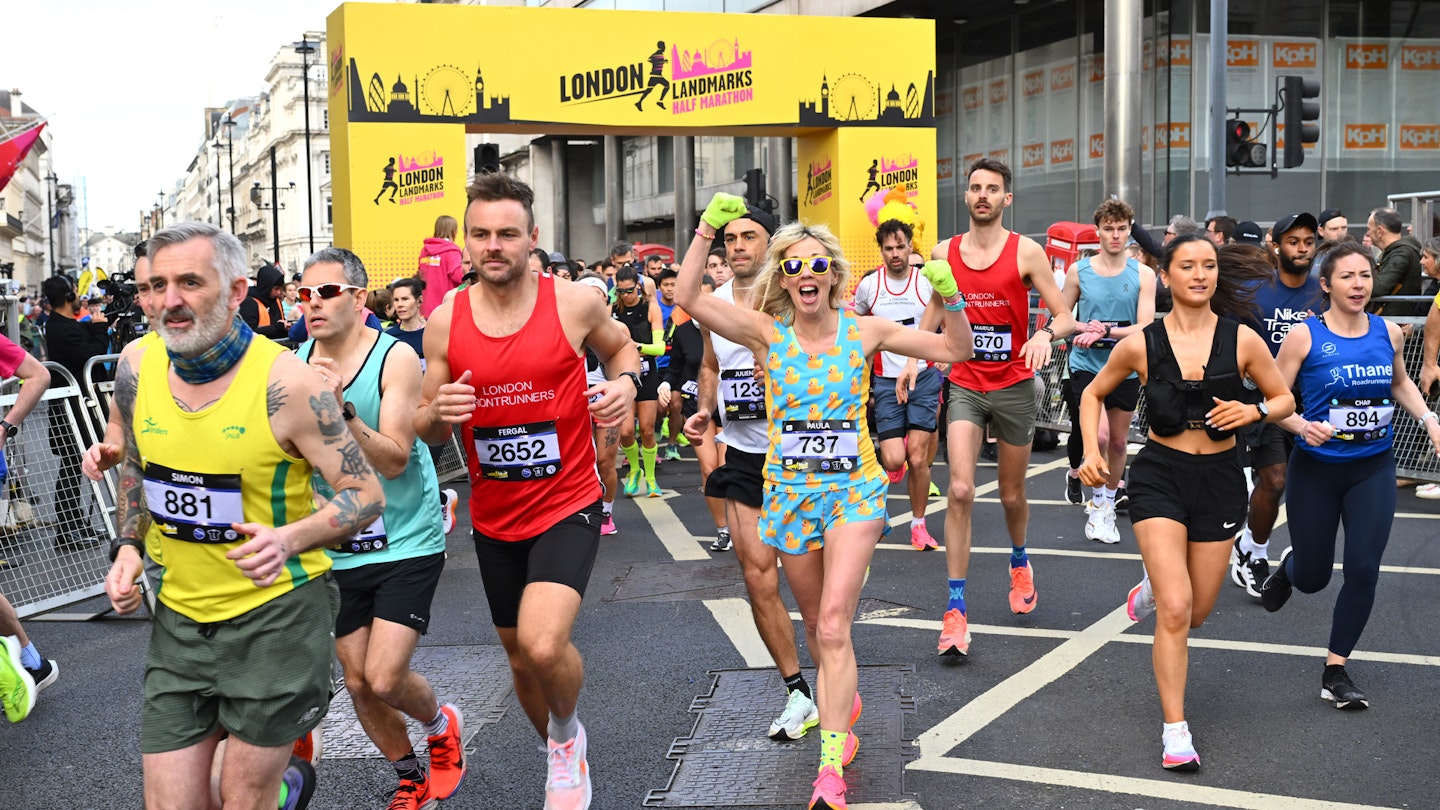
Finishing ahead of the median is a solid goal – and puts you in the top half of your peers! That's still brag-worthy, right?
Men's median (top 50%) times
18–29 | 3:57
30–39 | 4:00
40–49 | 4:07
50–59 | 4:18
60–69 | 4:43
70–79 | 5:28
80+ | 6:45 (est.)
Women's median (top 50%) times
18–29 | 4:34
30–39 | 4:36
40–49 | 4:48
50–59 | 5:15
60–69 | 5:58
70–79 | 6:42
80+ | 7:35 (est.)
Across all finishers, the median time in 2024 was around 4:23:30. So a time under that puts you ahead of half the field. A 4-hour marathon places you solidly above average, while a 5-hour time is closer to the 70th–75th percentile.
These numbers show that "good" is always relative. A great time might mean top 10% in your age group – say, sub-3:00 for a young man or sub-3:30 for a young woman. A good time could be top 25%, and a solid effort lands you around the 50th percentile. But finishing a marathon at all is still an achievement worth celebrating.
Road vs. trail: how terrain affects marathon times

The times we’ve discussed above generally assume a standard road marathon (like London, Berlin, or Chicago), which are on flat, paved courses optimised for speed. In those conditions, a well-trained runner might set a personal best.
Trail marathons, on the other hand, are a different beast entirely. They introduce hills, mud, uneven terrain, gates, stiles and far more elevation gain – all of which slow finish times dramatically.
Consider Snowdonia in Wales, which hosts both a road race (Marathon Eryri) and an off-road trail race to the summit of Snowdon and back. In July 2023, the winning man at the Snowdonia Trail Marathon took 4:04:11 to cover a roughly marathon-distance route with heavy mountain terrain.
It wasn’t because he was slow – it's because he was going up and down a big mountain. A 5-6 hour trail marathon is often a very strong performance.
The Great Langdale Marathon, one of the toughest road marathons in the UK, has a course record of just 2:41, and most winners finish around 3:00. That’s an hour slower than the world record for good reason: constant hills.
So, if you enter a trail marathon, adjust your expectations. Don’t chase a PB. Go for the challenge, the views and the satisfaction. A 4-hour finish on a tough trail course might be equivalent to a 3:30 on the road. Of course, we trail runners tend to find marathons quite short, and usually opt for running an ultra marathon instead.
Advice for first-time marathoners
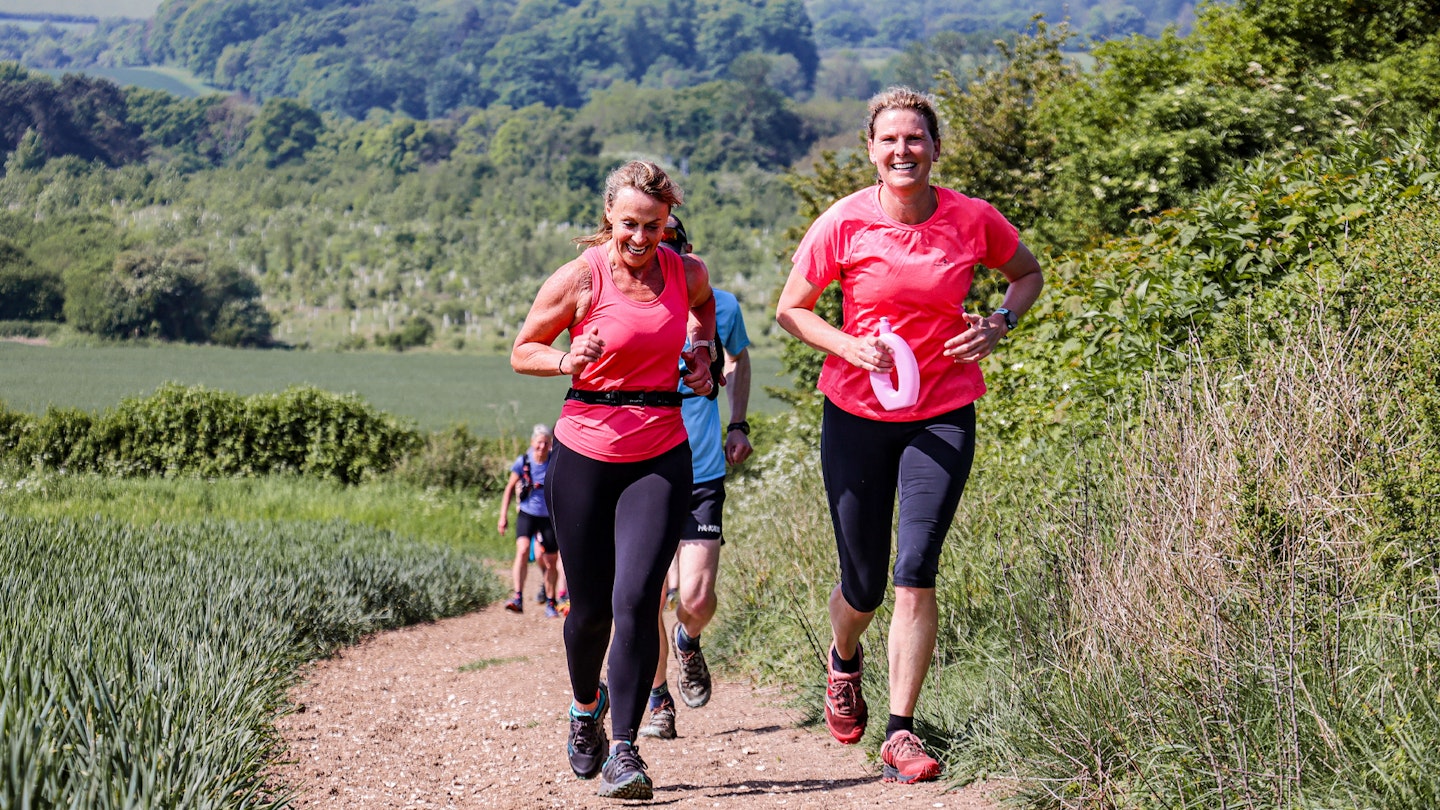
Follow a training plan: Most beginners follow a 12–16 week plan that builds your long runs gradually. In fact, we have our own 12-week marathon training plan that lands in your email when you sign up for our Run1000Miles challenge!
But, in short, aim for at least one run of 18–20 miles before race day. Consistency matters more than speed – three to four weekly runs, a long run, and maybe some cross-training will get you there.
Practice your fuelling: Hitting the wall is often due to underfuelling. Take in 30–60g of carbs per hour using energy gels or snacks you've tested in training. Sip water or electrolyte drinks at aid stations. Train your gut, not just your legs.
Stick with proven gear: Don’t race in brand-new shoes or clothes. Use only the kit you’ve done long runs in to avoid blisters or chafing. That includes hydration packs, bottles, and anything you plan to carry.
Pace smartly: Go out easy – conventional marathon wisdom dictates that the real test starts after 20 miles. A steady, controlled pace helps you finish strong. It’s better to pass people in the final miles than to blow up early.
Taper and recover: Cut mileage in the final 2–3 weeks before race day to let your body recharge. You won’t gain fitness in the last week, so focus on rest, food, and sleep.
Stay positive: A marathon is as mental as it is physical. Break the race into chunks. Run for a cause or join a training group for motivation. Soak up the atmosphere on race day – it’s meant to be memorable.
Whatever your time, if you finish a marathon on your own terms, that’s a success. The numbers matter less than the feeling of crossing that line. Wear your medal with pride – you've earned it.
About the author
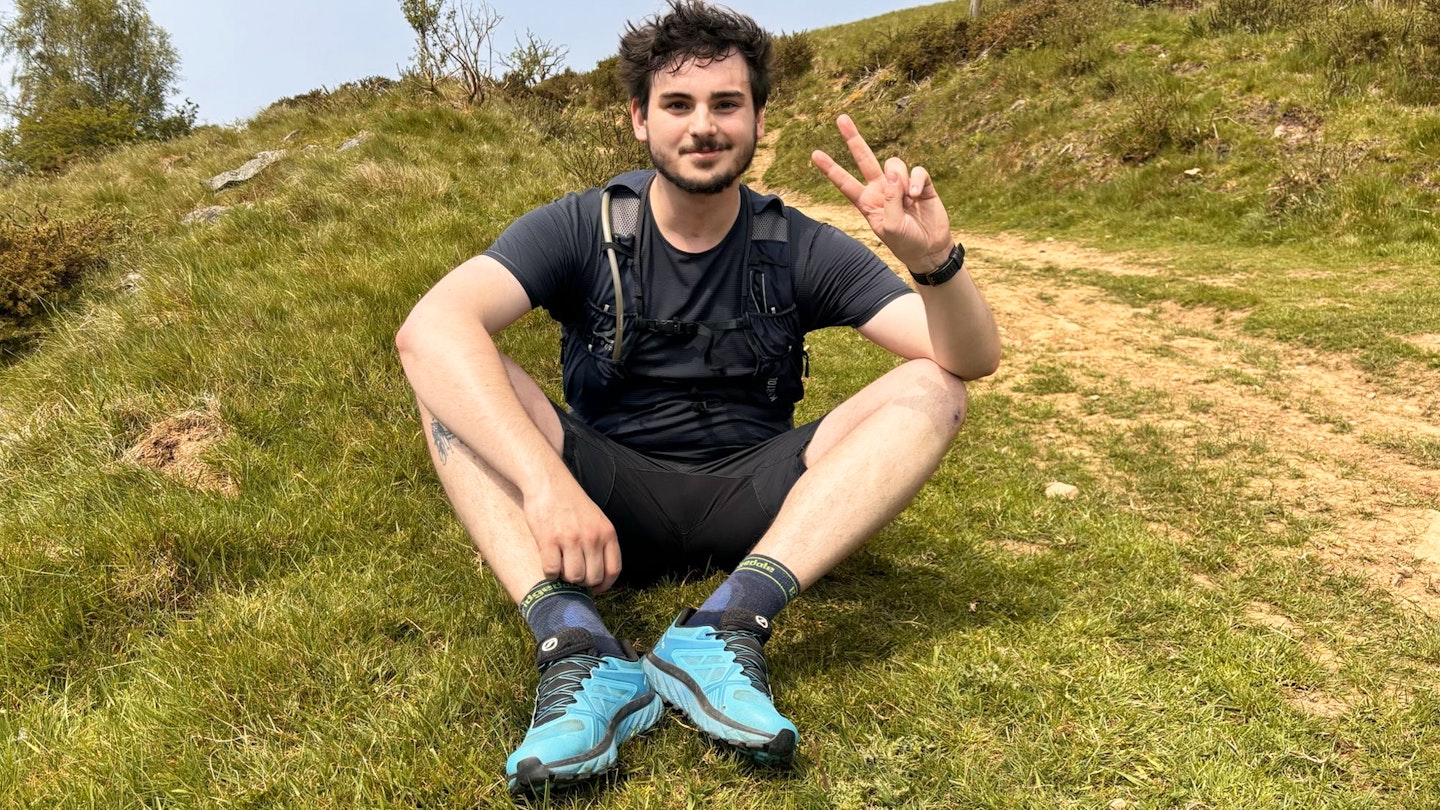
Milo Wilson is about half as fit as he is handsome – which is to say that he's extraordinarily fit. Milo joined LFTO in early 2023 and quickly became the voice of our trail running section, offering sage and well-researched advice on race times, training plans, and planning your route to avoid any local youths.
He spends his weekends destroying trail running shoes across the Surrey Hills, and writing more gear reviews than you've had hot dinners.
